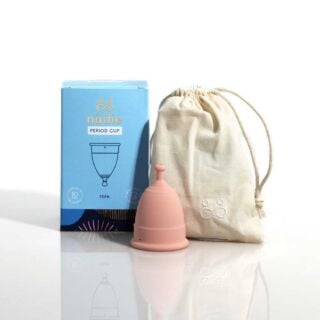&Sisters by Mooncup
&Sisters by Mooncup firmly believe that every woman deserves access to safe and sustainable period care that prioritises both our bodies and the planet. … Read More See less
Their range of tampons, pads and liners have been crafted from 100% chlorine-free, bleach-free, biodegradable and certified organic cotton, ensuring a vegan, cruelty-free and plastic-free solution.
With a strong commitment to environmental consciousness, &Sisters offers a range of products that align with the values of women seeking eco-friendly period options without compromising on quality or comfort.
Related Guides

Free delivery when you spend over £30

100% discreet delivery for every item ordered

Fully regulated UK pharmacy
What can relieve period pain?
If you dread the sharp, poking, cramp-like pain in your stomach each time your period comes knocking, you might be wondering the best ways to help ease it.
By taking over-the-counter pain medicine, like ibuprofen, can help to reduce bleeding and the severity of pain during your period.
Applying heat with something like a hot water bottle or a heating pad on your belly or lower back may relieve pain, in addition to reserving time to rest.
What causes period pain?
Period pain is extremely common, affecting most women at some point in their lives.
It can be extremely painful, with intense spasms in the stomach and pain that can spread to the back and thighs
During a period, the muscular wall of the womb starts to contract so the lining can shed.
When this contraction happens, blood vessels in the lining of the womb are compressed and the blood supply to the womb is temporarily cut off.
When there’s no blood supply, there’s no oxygen, and this causes the tissues in the womb to release chemicals that trigger pain.
When those chemicals are released, hormones called prostaglandins encourage the muscles in the womb to contract even more and the pain further intensifies.
Sometimes, certain medical conditions can make your periods heavier and more painful.
These include endometriosis, fibroids, pelvic inflammatory disease or adenomyosis.
Can period pain give you back pain?
Although menstrual cramps normally cause period pain in your stomach, it can also give you lower back pain.
This is because the muscle cramps around your womb can affect your back muscles as well as stomach muscles, especially during particularly heavy periods.
Lower back pain during your period can also be a symptom of a condition called endometriosis, so if you’re worried that this may be affecting you, speak to your doctor as soon as possible.
Are pads or tampons better?
They both offer you the same protection, but it all comes down to personal preference and lifestyle.
Pads are easier to apply, you’ll have a better idea of when it needs changing, and you’re at very low risk of developing toxic shock syndrome.
However, you can’t go swimming in pads and they’re less discreet than tampons, which could be an issue if you’re wearing tight-fitting clothing.
How long can you wear a tampon?
Once you’ve inserted the tampon, it should be changed every 4 to 8 hours.
8 hours is the maximum period of time to leave a tampon in your body - if it exceeds this, it can make you very unwell.
If you don’t feel the need to change your tampon after 8 hours, the absorbency is probably too high.
What is the correct way to insert a tampon?
First, wash your hands and try to relax - inserting the tampon will be easier and more comfortable if you’re relaxed.
Open the folds of skin on your vagina and slide the barrel inside, angling slightly towards your back.
Then, hold the grip and push on the smaller tube to insert the absorbent part of the tampon deeper inside the vaginal canal.
Remove the barrel of the tampon and leave the string hanging out - don’t pull on this string until you’re ready to remove it.








